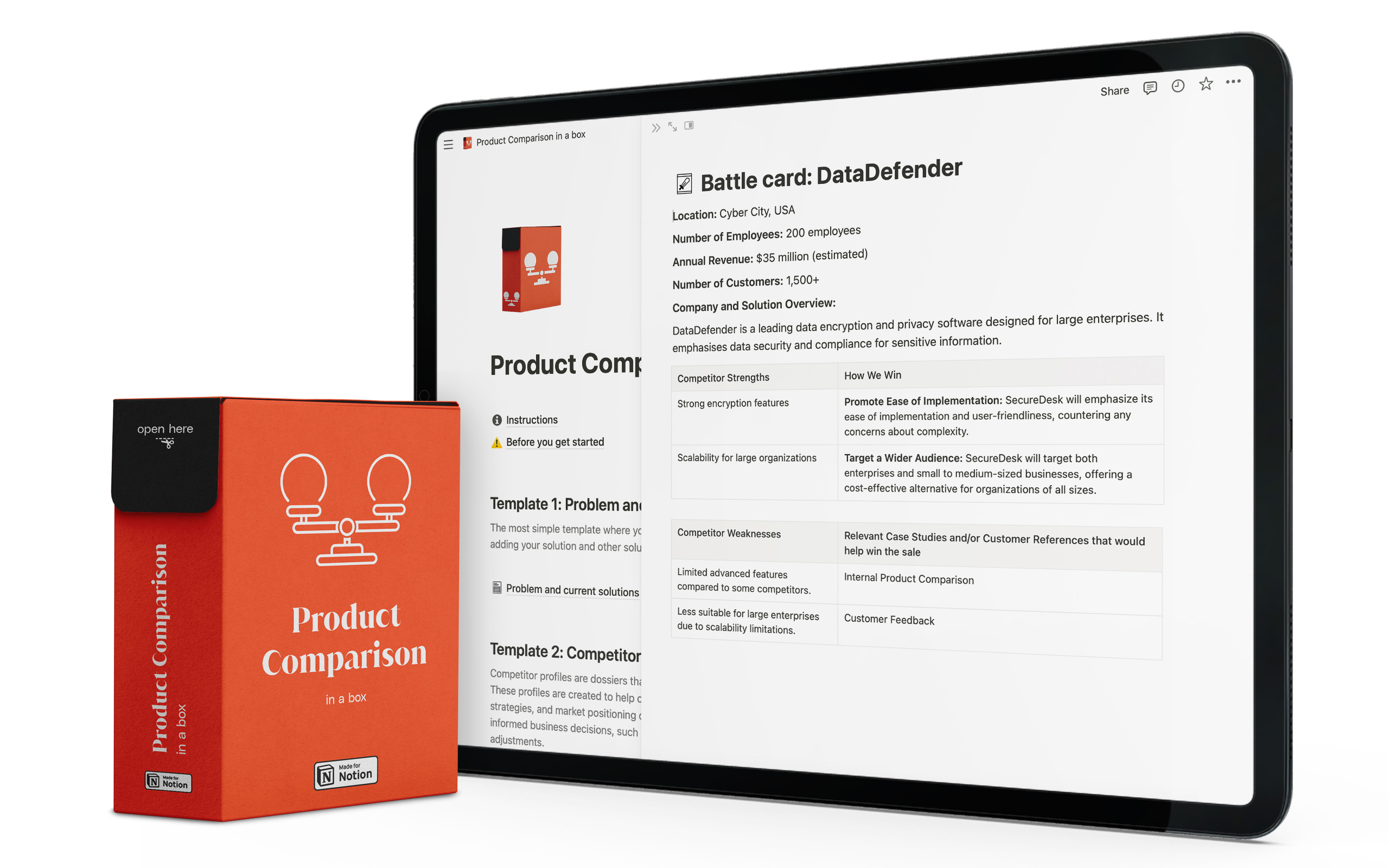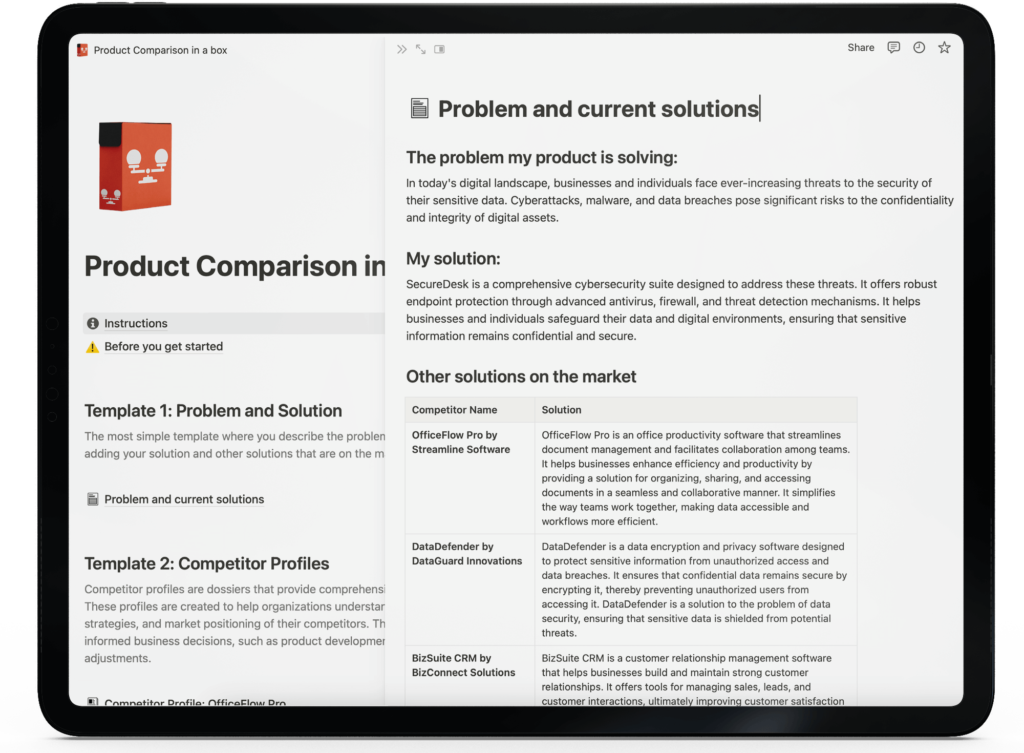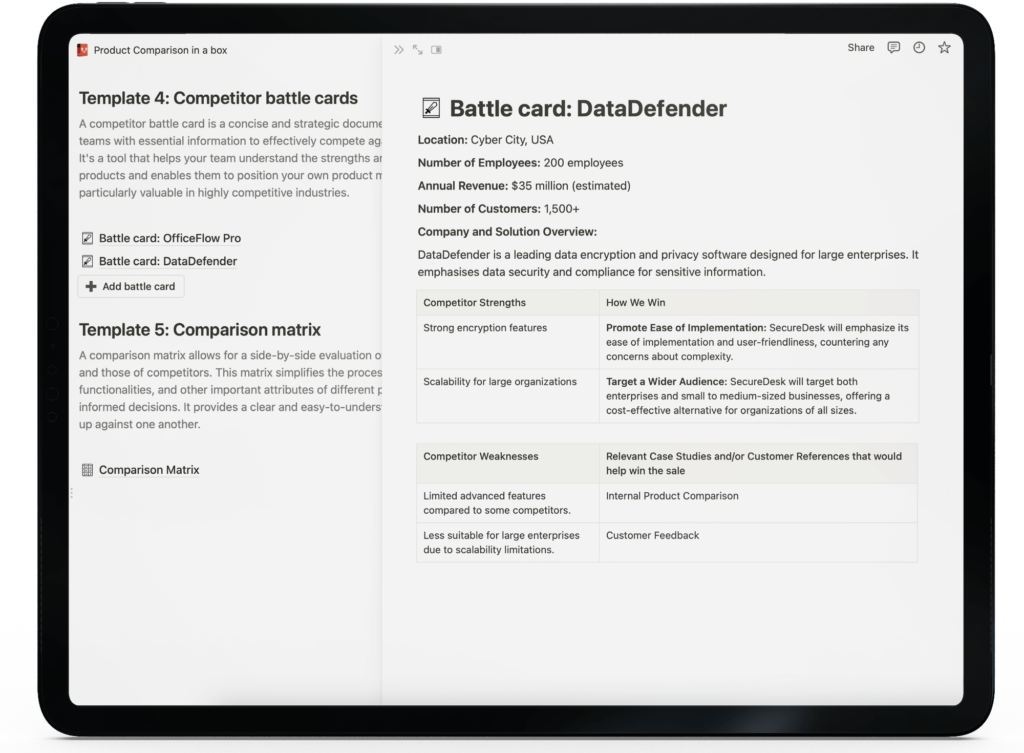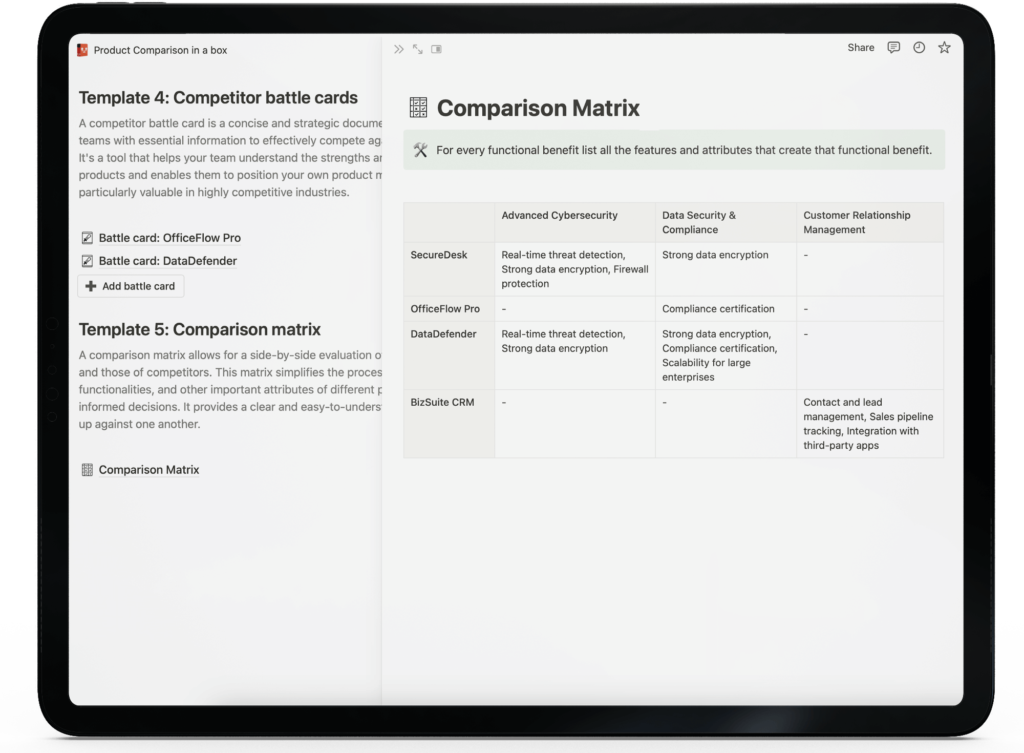Product Comparison in a box,
for Notion
A collection of 5 frameworks designed to facilitate the comparison of your product with competitors.
From simple solution comparison tables to more complex options like competitor profiles, battle cards, or comparison matrices, you will find ample instructions and examples to help you find a solution that fits your product.

So, what’s in the box?
Comprehensive frameworks carefully designed to facilitate the creation of a product strategy inside Notion.
All sections include
ℹ️ Descriptions...
…that give you an overview of the importance of the section, so you can decide if you want to keep it or not in your brand book.
🛠️ To-dos...
…with instructions that explain what to write in order to correctly complete this section.
[Templates]...
…where you need to fill in the blanks according to the instructions above to generate your content.
💡 Examples...
… to inspire you to better articulate your content, in case you get stuck.
5 frameworks, one box
Problem and Solution
The most simple template where you describe the problem you’re solving and then continue by adding your solution and other solutions that are on the market.
Competitor Profiles
Competitor profiles are dossiers that provide comprehensive information about your competitors. These profiles are created to help organizations understand the strengths, weaknesses, strategies, and market positioning of their competitors. They are valuable tools for making informed business decisions, such as product development, marketing strategies, and pricing adjustments.
Competitor scoring cards
Creating a competitor product scoring card, also known as a competitive analysis framework, is a structured way to assess and compare your software product against competitors. This tool helps you make informed decisions, identify areas for improvement, and develop strategies to gain a competitive edge
Competitor battle cards
A competitor battle card is a concise and strategic document that provides sales and marketing teams with essential information to effectively compete against specific rivals in the marketplace. It's a tool that helps your team understand the strengths and weaknesses of your competitors' products and enables them to position your own product more effectively. These cards are particularly valuable in highly competitive industries.
Comparison matrix
A comparison matrix allows for a side-by-side evaluation of multiple products, including your own and those of competitors. This matrix simplifies the process of comparing features, functionalities, and other important attributes of different products to help stakeholders make informed decisions. It provides a clear and easy-to-understand overview of how products stack up against one another.





Why?
Product comparison, when integrated into a company’s product strategy, provides a structured and data-driven approach to decision-making, ensuring that product development and management efforts are aligned with overarching business objectives and market dynamics.
Feature Prioritisation
Identify areas to invest in, improve, or phase out, to enhance the product strategy for long-term growth.
Market Alignment
Ensure that the company's offerings align with market trends and customer demands, supporting a product strategy focused on market fit.
Innovation Prioritizsation
Assess new product ideas and innovations against existing offerings, guiding the product strategy toward the most promising and impactful projects.
Competitive Positioning
Position your products effectively in the market by understanding their competitive advantages and disadvantages.
Resource Allocation
Facilitate resource allocation decisions, allocate development, marketing, and sales resources to products that align with your strategic goals.
Customer Segmentation
Compare products to tailor your strategies for different customer segments, ensuring that each segment receives the most relevant and valuable offerings.
Go-to-Market Strategy
Make informed decisions related to the timing, pricing, and marketing strategies for new product launches, enhancing the overall go-to-market strategy.
Risk Mitigation
Identify potential risks and weaknesses in product offerings, allowing companies to proactively address them as part of their risk mitigation strategy.